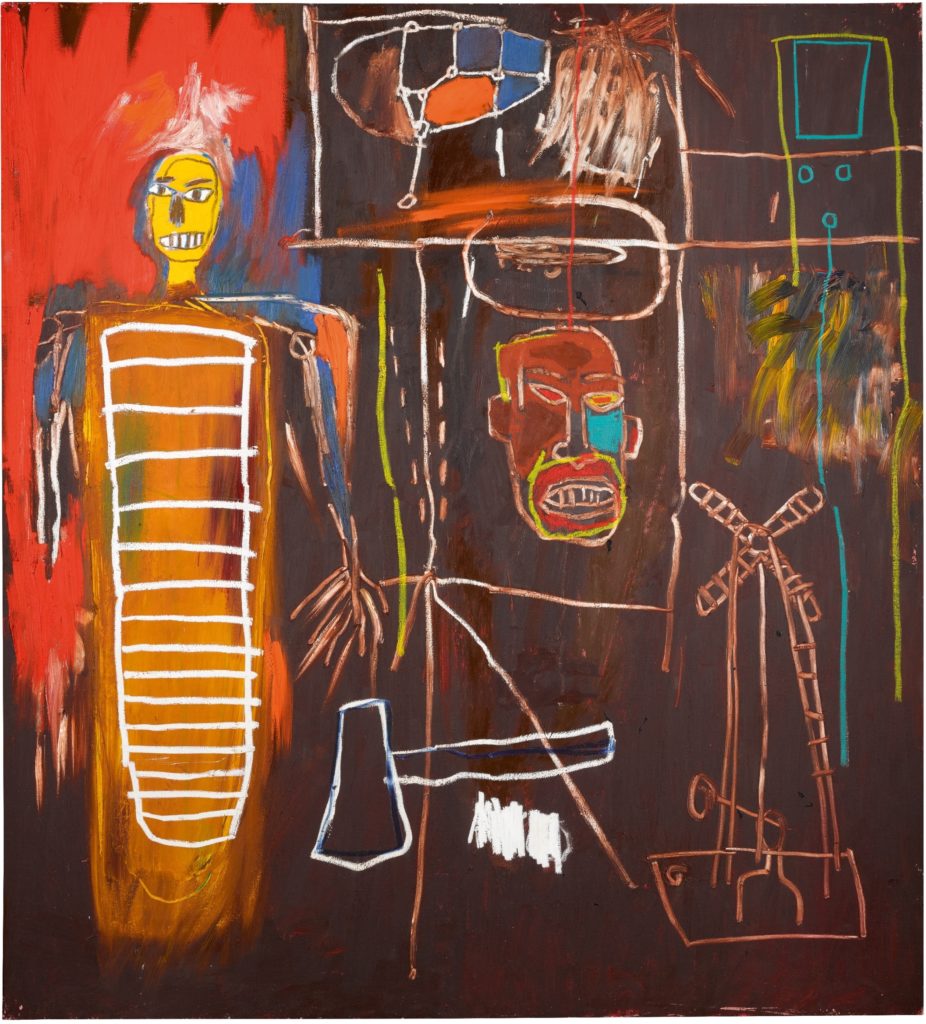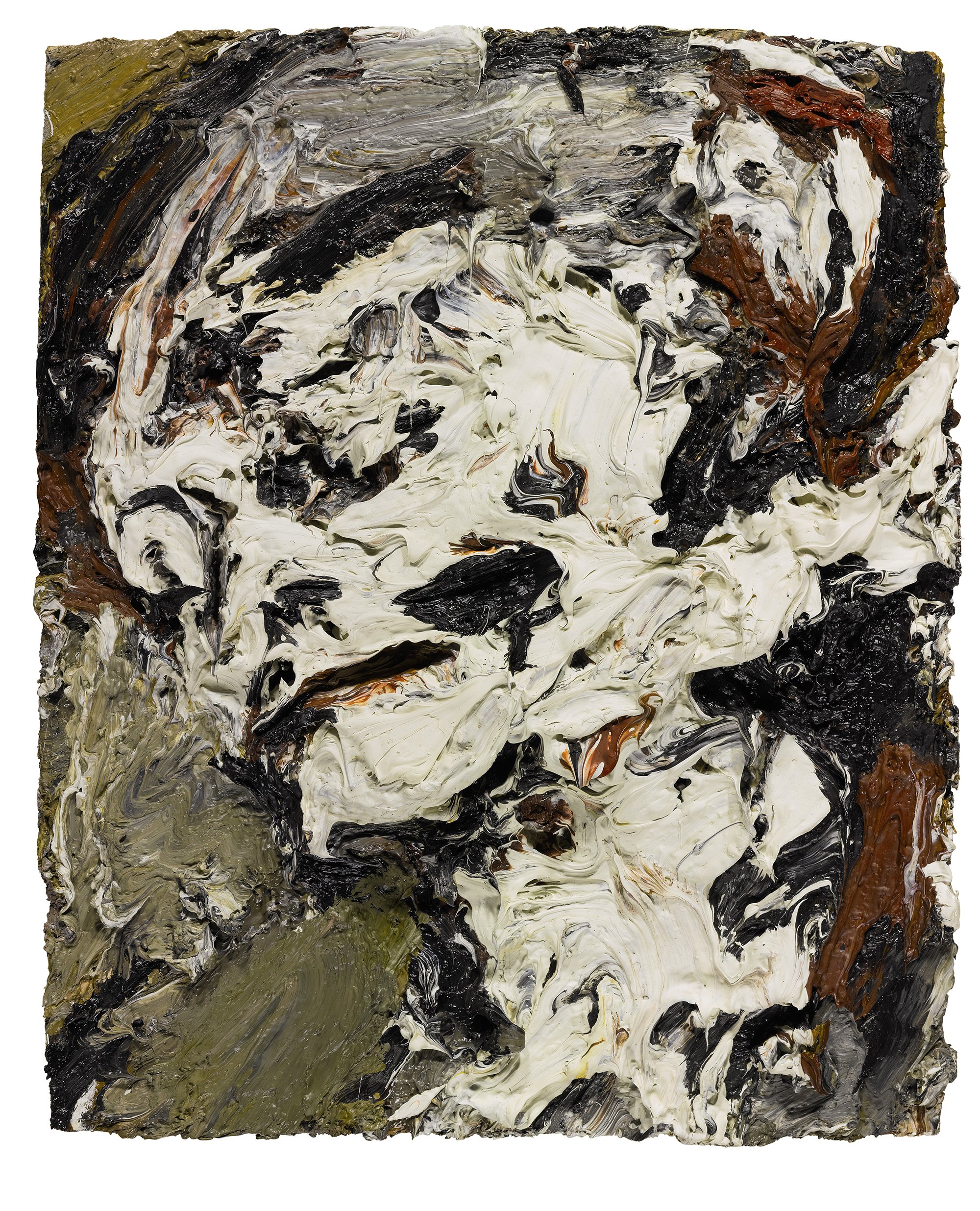Auctions
$30 Million David Bowie Auction Sets Records for Modern British Art
The first of multiple sales outdoes the high estimate for the whole collection.

The first of multiple sales outdoes the high estimate for the whole collection.

There were no signs of a post-Brexit or Donald Trump election victory backlash in the art market tonight as, fairly predictably, every lot found a buyer in the first of Sotheby’s three-part, two-day sale of the David Bowie collection. Over 720 bidders registered to make a play for the 49 lots—more than for any other evening sale at Sotheby’s—and the pre-sale estimate of £8.1 million to £11.7 million ($10.04/14.5 million) was easily surpassed as it ran up a total of £24.3 million or $30.2 million.
One Basquiat collector, already known to Sotheby’s, made the trip to claim two works by the artist which Bowie had bought in 1995, when he was preparing for his role as Andy Warhol in Julian Schnabel’s film about Basquiat. Both dated to 1984, the smaller untitled composition which had cost £58,700 sold for £2.8 million, while the larger Air Power, which had cost the singer £78,500, doubled estimates to sell for £7.1 million ($8.8 million) and registered the greatest price increase of the sale.
Bowie’s earliest painting, and probably earliest acquisition in the sale, was a 16th century canvas of an angelic apparition to the Catholic martyr, St Catherine of Alexandria, which sold above estimate for £191,000. Now going on long-term loan to the Rubenshuis in Antwerp, it should certainly do something to enhance attendance figures.
Skipping three centuries, Bowie was looking at surrealism in the mid-80s. Duchamp’s ball of twine multiple, With Hidden Noise, attracted bidding from Polly Robinson from the Thaddaeus Ropac Gallery before selling to a phone bidder for a double estimate £557,000. This group of works also saw a record £197,000 pulverize a £20,000 estimate for Meret Oppenheim’s 1973 painting, La Condition Humaine.

Frank Auerbach, Head of Gerda Boehm (1965). Courtesy of Sotheby’s London.
If Bowie dabbled with Old Masters and surrealism, he then went full tilt into the relatively undervalued area of Modern British art, where he could and did buy in depth. The greatest return here was for Frank Auerbach’s early Head of Gerda Boehm, from 1965. Small but heavily encrusted, it is of the type that has been attracting the most attention at auction with admirers on both sides of the Atlantic chasing above a cautious £300,000 estimate to sell for a record £3.8 million ($4.7 million).
Eleven records were set for Modern British artists. Following the Auerbach was Witness (1961), by Peter Lanyon, a west country artist often compared to American Abstract Expressionists. The £250/350,000 estimate was one of the highest for Lanyon yet, but a private collector outbid London dealer Daniel Katz to buy it for a record £797,000. Katz went on to pay a triple estimate record £100,000 for a superb 1913 drawing of the historian Lytton Strachey by Henry Lamb.
Bowie had a real feel for what his advisor, Kate Chertavian, calls “the dusty corners” of British art, and he had acquired a classic 1917 Camden Town school painting by Harold Gilman, Interior (Mrs Mounter), in 1993, for a record £111,500. It now attracted bids above the upper estimate of £250,000 from London gallery Pyms, but sold eventually to a private collector for a new record £485,000.
Other notable prices for Modern British art were the top estimate record £665,000 for Patrick Caulfield’s architecturally minimal Foyer (1973), bought in 1997 for £36,700; Ivon Hitchens’s fairly standard The Boathouse, and an early, atypical view of St Ives harbor by Winifred Nicholson, each of which sold for a record £245,000.

Peter Lanyon, Witness (1961). Courtesy Sotheby’s
Perhaps the biggest surprise of the evening was a small watercolor study of the head of James Joyce by the Irish artist Louis le Brocquy, which Bowie bought in 1994 for £1,265. Now estimated at £10,000, it sold for £68,750—the biggest mark-up of the sale after the Basquiat—not that Bowie would have cared too much about such things.
Towards the end of the 1990s, Bowie became more involved with contemporary art and the YBAs. The sale ended with two spin paintings by Damien Hirst, one of which sold to a young US collector in the room for a double estimate £755,000.
British trade buying was rare. The Waterhouse and Dodd gallery, for example, bought Lanyon’s 1951 landscape, Trevalgan, within estimate for £305,000. But most dealers ended up as underbidders. Alon Zakaim bid unsuccessfully on a 1995 Damien Hirst/David Bowie combined spin painting that doubled estimates at £785,000; Thomas Lighton underbid Kenneth Armitage’s small bronze Figure Lying on its Side (1957), which sold to one of many online bidders for a double estimate £125,000; former Sotheby’s specialist James Rawlin underbid Edward Wadsworth’s surrealistic Au Revoir (1929), which almost trebled estimates at £112,500; Alan Wheatley underbid one of several darkly expressionist paintings by David Bomberg which sold below estimate for £68,750; and Guy Morrison underbid Gilbert and George’s nine panel photographic work, LEAF, which sold above estimate for £281,000.
The Part One sale has already surpassed the high estimate for the whole collection (of which more is on sale tomorrow, Friday) of just £14.3 million ($17.7 million), which is not, in the scheme of things, a great deal. In the art world, as opposed to the music world, Bowie was a big fish in a relatively small pond.
But the sale has brought other less tangible rewards to the table. Thanks to Bowie, modern British art and Sotheby’s both have a far wider audience than before. If you Googled Sotheby’s and Bowie before the sale, you got 55,000 results; over 2.2 million viewed the Instagram images posted by invited bloggers one night during the preview; nearly 40,000 actually viewed the sale in London over ten days.
There are no specific statistics as yet, but bidding in the sale came from 46 countries, more than any modern British sale before, and a significant number of bids came from people new to the modern British department.